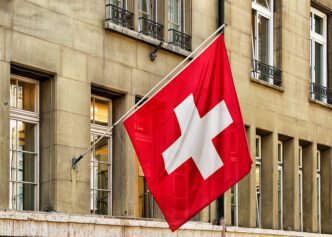KEY POINTS
- The National Bureau of Economic Research (NBER) officially declares recessions in the U.S., based on a broad assessment of economic activity rather than just GDP decline.
- Recessions impact households and businesses through rising unemployment, reduced consumer spending, and tighter access to credit.
- Governments and central banks respond to recessions using fiscal policies (government spending and taxation) and monetary policies (interest rate adjustments and quantitative easing).
A recession is a significant, widespread, and prolonged downturn in economic activity, officially declared in the United States by the National Bureau of Economic Research (NBER). While often colloquially defined as two consecutive quarters of declining Gross Domestic Product (GDP), the official determination is a more complex judgment based on a range of data, confirming a contraction that affects households, businesses, and financial markets across the entire economy.
What Officially Constitutes a Recession?
For many, the word “recession” brings to mind a simple technical rule: six straight months of the economy shrinking. This “two-quarter” rule is a useful shorthand but is not the definition used by economists or the U.S. government to make an official call.
The authority for declaring the start and end dates of a U.S. recession rests with the NBER’s Business Cycle Dating Committee. This non-partisan group of eight elite economists takes a more holistic approach, defining a recession as a “significant decline in economic activity that is spread across the economy and that lasts more than a few months.”
The NBER’s Key Indicators
Rather than focusing solely on GDP, the NBER committee analyzes several key monthly data points to assess the health of the economy. They are looking for three critical characteristics in any downturn: its depth, its diffusion (how widespread it is), and its duration.
The primary indicators include real personal income less government transfers, nonfarm payroll employment, real personal consumption expenditures, and industrial production. A decline must be evident across these different measures, not just in one isolated sector, to be considered a true recession.
Because the committee waits for comprehensive and revised data, it often declares a recession’s start date many months after it has already begun. This retroactive declaration provides certainty for economic historians and policymakers but means the public often feels the effects of a downturn long before it is officially named.
The Real-World Impact on Households and Businesses
Economic indicators and official declarations are abstract, but the consequences of a recession are deeply personal. For most people, the most significant impact is on the labor market. As businesses see demand for their goods and services fall, they often slow hiring, freeze wages, and ultimately resort to layoffs to cut costs.
This leads to a rising unemployment rate, which reduces the bargaining power of workers and can lead to stagnant wage growth for those who remain employed. The financial insecurity ripples outward, causing consumers to cut back on discretionary spending, which further dampens economic activity in a negative feedback loop.
For businesses, a recession means falling revenues and tighter access to credit. Small businesses, which often have smaller cash reserves, are particularly vulnerable to these downturns. The economic contraction can also depress investment, as companies postpone plans for expansion, new equipment, and research.
Navigating a Downturn Personally
Understanding the threat of a recession allows individuals to prepare their personal finances. Building an emergency fund, typically covering three to six months of essential living expenses, provides a critical cushion against job loss or reduced income.
This is also a crucial time to aggressively pay down high-interest debt, such as credit card balances, which can become unmanageable during a period of financial instability. Reviewing personal budgets to identify non-essential spending that can be trimmed is another vital step in building financial resilience.
How Governments and Central Banks Respond
When a recession hits, governments and central banks deploy powerful tools to try and mitigate the damage and stimulate a recovery. These actions fall into two main categories: fiscal policy, managed by the government, and monetary policy, managed by the central bank (in the U.S., the Federal Reserve).
Fiscal Policy Levers
Fiscal policy involves the government’s use of spending and taxation. To fight a recession, Congress and the White House can enact stimulus measures, such as sending direct payments to households to boost consumer spending.
They can also expand the social safety net by increasing unemployment benefits or food assistance. On the taxation side, tax cuts for individuals and businesses can leave more money in their pockets, theoretically encouraging spending and investment.
Monetary Policy Tools
The Federal Reserve’s primary tool is adjusting the federal funds rate, which is the interest rate at which banks lend to each other overnight. By cutting this rate, the Fed makes borrowing cheaper across the economy for everything from mortgages and car loans to business credit lines, encouraging spending and investment.
If rate cuts are not enough, the Fed can turn to unconventional tools like “quantitative easing” (QE). This involves the large-scale purchase of government bonds and other securities to inject money directly into the financial system, further lowering long-term interest rates and promoting liquidity.
Conclusion
A recession is far more than a technical headline; it is a challenging period of broad economic contraction that directly impacts the financial well-being of citizens and the stability of businesses. While officially identified by the NBER through a comprehensive analysis of data, its effects are felt on Main Street through job losses and financial hardship. Understanding the nature of a recession and the policy responses it triggers is essential for navigating the inevitable cycles of the modern economy.








